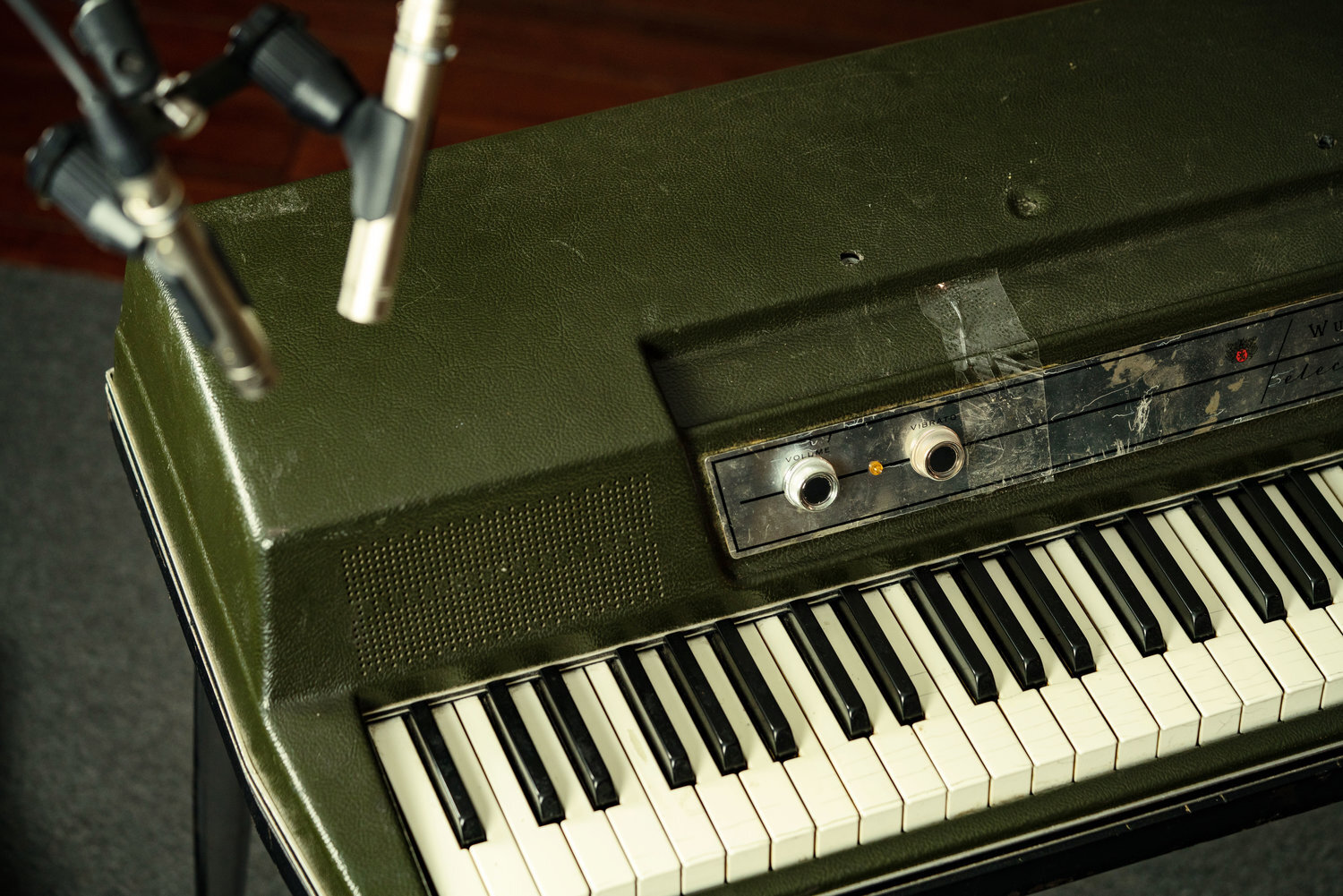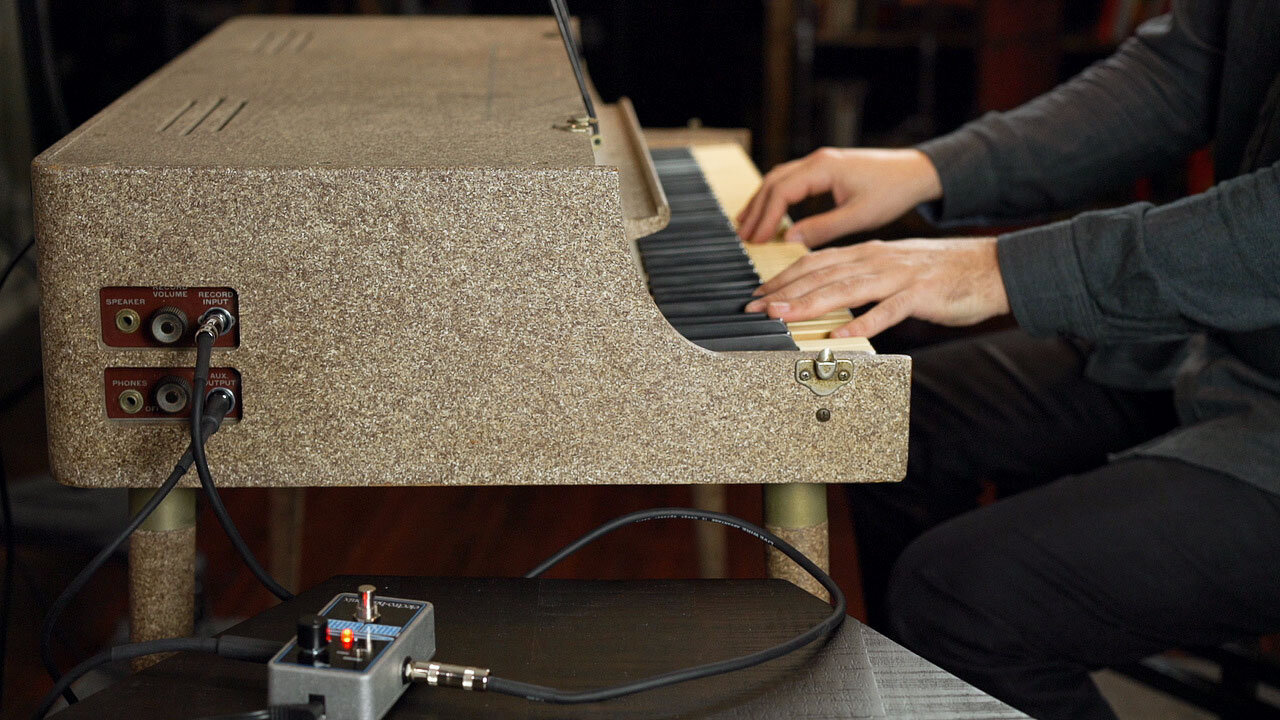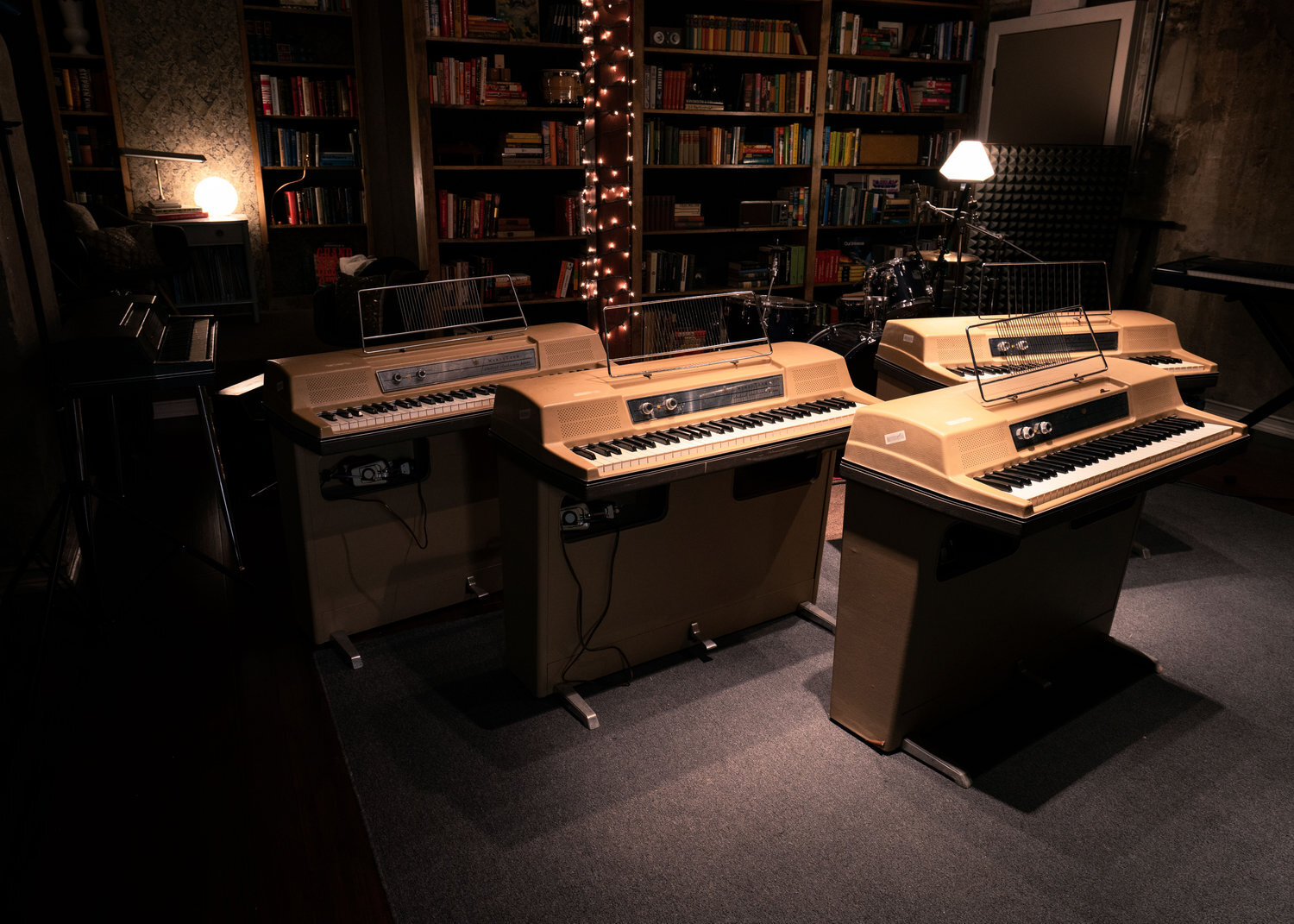Essential Accessories for Wurlitzer Electronic Pianos
The Wurlitzer 203 has no lack of speakers, but the aux output allows it to be connected to an external amplifier or straight into a mixer.
A Wurlitzer is a self-contained instrument. Thanks to its onboard speakers and onboard amplifier, all you truly need to get started playing a Wurlitzer is the Wurlitzer itself. No external amps or accessories required!
Of course, there are a few pieces of gear that will make your Wurlitzer perform at its fullest potential. Here’s what we recommend:
A really good power strip. Plugging a Wurlitzer straight into the wall is inadvisable. There are a lot of secret dangers and annoyances hiding on the opposite side of your wall outlets, including noise and voltage spikes.
At minimum, a good power strip sits firmly on the ground and has an accessible switch, so you can easily kill the power whenever the instrument isn’t in use. Our favorite is the Furman SS-6B. More elaborate power strips have extra features, including noise filtering and auto-shutoff if the voltage spikes beyond a certain point.
A DI box. Likewise, plugging a Wurlitzer straight into an expensive piece of new-production gear can be a risky proposition. Inserting a DI box into the signal chain can provide a level of separation between the two devices. Most DI boxes contain an isolation transformer that prevents unexpected faults traveling from one device to the other. It can also interrupt ground loops, resulting in a cleaner output.
A load box or cabinet simulator. Early Wurlitzer models typically do not have an aux output. Although some amps can be modded to add an output, the small chassis leaves very little physical space for the best-quality solutions. Furthermore, much of the amplifiers’ classic tones are thanks to the output section: the 7868s in a 145, or the germanium transistors of a 140b.
A load box is a device that allows you to connect the speaker output to a mixer, in a similar way that you would connect an aux output. This allows you to capture the tone of the entire amplifier circuit: not just the preamp, which is the case with most aux output designs. More elaborate load boxes have speaker modeling, so you can additionally experiment with different speaker tones.
A preamp. Even some Wurlitzers that do have an aux — for instance, the 200 — often output a very low-level signal. A high-quality preamp is necessary to make this signal usable with a minimum of noise. Even if your Wurlitzer gives you plenty of signal, a preamp can help you shape the tone or add a little tube warmth.
Consider the 200. If you connect the aux out of a 200 straight into a mixer, the signal will be very quiet. Cranking the volume is an imperfect solution because it increases the noise level as well as the signal. Also, the output is so quiet that cranking the volume might not even get you the level you were hoping for anyway.
On the other hand, if you put a preamp between your 200 and your mixer, you can potentially get a lot more clean volume out of the Wurlitzer. A high-quality preamp, such as the Universal Audio LA610, will boost signal volume without adding any noise of its own. Any guitar amplifier can be used in a similar way. However, a guitar amp may introduce more noise, particularly if the amp’s grounding scheme creates a ground loop with the Wurlitzer. But if you can find an amp that interfaces nicely with the Wurlitzer, it can color the sound in an interesting way.
Effects pedals. A Wurlitzer can accept effects pedals between its aux out and a mixer/amplifier, or in its effects loop (if it has one). One of our favorites is a delay pedal, but of course there are many options available. You can shape the Wurlitzer’s tone with subtlety, or use more dramatic effects to create abstract synth-like tones. More on using pedals here.
Further Reading
Browse all of our articles on restoring vintage gear. Or, click on an image below.






